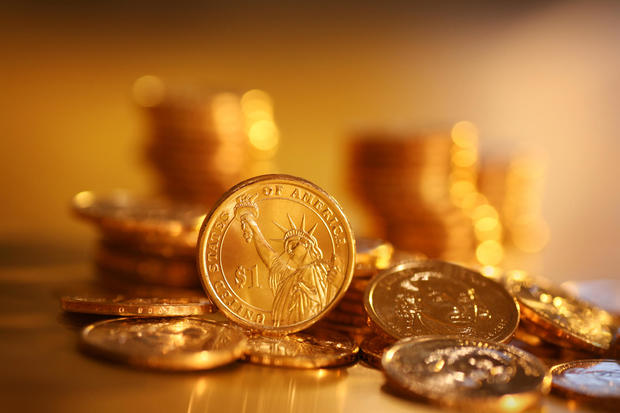Opening a gold IRA? Avoid these 5 costly mistakes
Gold investing has significantly increased in popularity in recent years — and for good reason. Not only does gold allow you to diversify your investment portfolio with a safer investment asset, but it offers a lot of other unique benefits to investors, too.
And, when it comes to gold investing, you have lots of options to choose from. For example, you can put money into physical gold, like gold bars and coins, which are easily accessible these days. Online platforms and local gold dealers make it simple to buy gold bullion — and even Costco sells gold bars to its members now. There are plenty of other options, too, from gold stocks to gold exchange-traded funds (ETFs), gold mutual funds and gold futures and options, all of which have different benefits and downsides to consider.
But for investors looking to diversify their retirement portfolios beyond traditional paper assets, a gold individual retirement account (IRA) can be an attractive option. A gold IRA allows you to hold physical precious metals like gold, as well as silver, platinum and palladium, within a tax-advantaged retirement account. However, there are several costly mistakes to watch out for when opening and managing a gold IRA.
Learn about your best gold IRA options online today.
5 costly mistakes to avoid when opening a gold IRA
When you open a gold IRA, it's important to avoid making these five errors:
Not understanding the fees
While a gold IRA can be a great way to help prepare for retirement, opening and maintaining a gold IRA often comes with higher fees compared to traditional IRAs that are invested in stocks and bonds. For example, there are typically one-time account setup fees, annual administrative and storage fees for the precious metals depository and transaction fees for buying and selling metals. Some companies even charge account termination fees.
These various costs can add up — and, in turn, may eat into your investment gains over time if you aren't careful. So before opening an account, get a full breakdown of all potential fees and compare costs across several gold IRA companies to find the most affordable option.
Find out more about how a gold IRA can help you prepare for retirement here.
Thinking you own the precious metals
When you open a gold IRA, you typically add gold bars and coins or other types of physical gold and precious metals to it. However, it's important to understand that the physical precious metals belong to the IRA itself, not you personally.
As such, the metals must remain in an approved, insured third-party depository until you begin taking distributions in retirement. You cannot have the physical metals shipped to your home or hold them yourself outside of the IRA structure — so you'll typically need a gold custodian to help manage your gold IRA.
Not following IRS rules and regulations
The IRS has very specific rules around what types of precious metals can be held in a gold IRA, including purity and manufacturing standards. It's very important that you know and follow these guidelines. For example, only gold coins minted by the U.S. Mint or approved foreign government mints meet the criteria set by the IRS. You cannot hold collectible coins or impure bars.
If you try to hold non-approved metals in your IRA, it can be considered a taxable distribution by the IRS — and it can come with penalties. As such, you should always double-check that any metals meet the requirements before purchasing them for your gold IRA.
Not diversifying beyond gold
While gold can act as an inflation hedge and offer other unique benefits to investors, it's generally wise to mix your precious metals exposure. A gold IRA can hold more than just gold bars and coins, so consider also allocating some of your IRA to silver, platinum or palladium. These other metals tend to be more industrially focused and can provide further diversification benefits compared to only holding gold.
Not understanding the required minimum distributions
Like a traditional IRA invested in securities, you cannot leave the gold or other precious metal assets in your IRA indefinitely. Once you reach age 72, you must begin taking required minimum distributions (RMDs) each year while paying taxes on those distributions.
The RMDs will need to be satisfied by liquidating the appropriate portion of your IRA metals holdings. And, challenges can arise when trying to satisfy RMDs from an IRA consisting of non-divisible assets like coins or bars, so proper planning is required.
The bottom line
Opening a gold IRA can be a great way to get exposure to precious metals and add diversification to your retirement portfolio — and a well-managed precious metals IRA can be a valuable part of an overall retirement strategy. However, these types of IRAs do often come with unique rules and higher costs than traditional IRAs. Luckily, you can avoid these costly pitfalls by doing your homework, understanding the fees, following regulations, diversifying your metals exposure and having a distribution plan.




